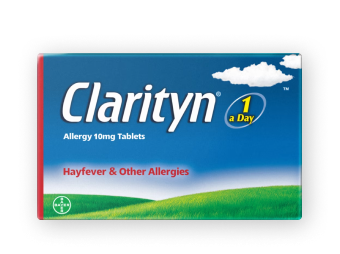What causes a grass pollen allergy?
Grass pollen allergies occur when the body falsely recognises grass pollen as a dangerous substance. This causes what’s known as an allergic reaction.
Pollen is a fine powder that spreads easily through the air and is released by plants as part of their reproductive cycle. It is made from proteins, which can cause the nose, eyes, throat and sinuses to become swollen, irritated and inflamed in some people.
The severity of pollen allergies may vary depending on the time of year. Grass pollen allergies are usually at their worst when the grass is pollinating which, in England and Wales, normally happens in the first two weeks of June, before peaking again during early July.
Grass pollen allergy symptoms
If you’re allergic to grass pollen, you might experience symptoms of hayfever (allergic rhinitis) when you come into contact with it. This will normally happen within seconds or minutes of exposure.
Some of the most common grass pollen allergy symptoms include:
- Sneezing and coughing
- A runny or blocked nose
- Itchy, red or watery eyes
- An itchy throat, mouth, nose or ears
Hayfever symptoms are normally at their worst during the grass pollen season, between late March and September. They can last for weeks or even months, depending on factors like weather conditions and how high the pollen count is.
If you’re concerned about symptoms or would like further information, speak to your doctor for advice.
Grass pollen allergy risk factors
While anyone can develop a grass pollen allergy, having a history of allergies within your family can increase your risk.
If any of your family members have been diagnosed with asthma or eczema, you may be more susceptible to developing a grass pollen allergy as well.
Grass pollen allergy complications
For some people, having a grass pollen allergy can lead to further complications and impact quality of life.
If you have asthma, for instance, you may find that your asthma symptoms worsen when you experience hayfever.
If left untreated, hayfever symptoms can also cause sinusitis – an inflammation (redness and swelling) of the sinuses often associated with cold and flu infections.
However, in most cases, hayfever symptoms won’t normally pose a serious threat to your health. Make sure to speak to your doctor if you experience any persistent symptoms or your symptoms get worse.
Grass pollen allergy treatment and management
While the symptoms of a grass pollen allergy can affect your ability to perform day-to-day activities and even your productivity at work, there are several treatments available to help manage them when they appear. These include:
- Antihistamines: commonly available as tablets, antihistamines can be used to help alleviate allergy symptoms
- Steroid nasal sprays: also known as corticosteroid nasal sprays, these help to reduce hayfever symptoms like inflammation and swelling
Using these treatments won’t cure your hayfever but, for most people with grass pollen allergies, they should be able to help relieve symptoms.
Clarityn® Allergy Tablets contain an active ingredient known as loratadine, which offers 24-hour prescription strength relief from symptoms caused by over 150 indoor and outdoor allergens, including grass pollen.
Or, Clarinaze® Allergy Control Nasal Spray provides effective relief from nasal congestion, sneezing and itchy runny nose, which is available over the counter without the need of a prescription.
However, if you’re not sure which type of treatment is right for your specific symptoms, speak to a pharmacist.
If your symptoms don’t improve after taking medicines from the pharmacy, speak to your doctor for advice and tailored support.
Grass pollen allergy prevention tips
Since grass pollen allergies are so closely related to hayfever, one of the most effective ways to control them is to avoid coming into contact with pollen, especially during grass pollen season.
However, this is sometimes easier said than done. Therefore, we’ve put together a list of recommendations to help you reduce your risk of exposure:
- Put petroleum jelly around your nostrils
- Wear wraparound sunglasses and a wide-brimmed hat
- Shower and change your clothes after being outside
- Keep your windows and doors shut as much as possible
- Use a vacuum with a high-efficiency particulate air ( HEPA ) filter
- Use a damp cloth when dusting
- Avoid mowing the lawn or raking leaves yourself
- Avoid smoking and being around smoke
- Limit your outdoor activities when pollen counts are high
- Avoid drying your clothes outside
- Keep your pets out of the house if possible
- Wear a mask when doing outdoor chores
- Keep an eye on pollen forecasts regularly
- Install an air filter or air purifier
By following these tips, you should be able to reduce your exposure to grass pollen and help manage your hayfever symptoms more effectively.
Pollen is one of the most common causes of allergies, with grass pollen in particular leading to 95% of hayfever cases. Fortunately, however, there are a wide variety of treatments and lifestyle changes you can make to help combat your grass pollen allergy symptoms.
To learn more about the different causes of allergies, including dust mites and pets like cats and dogs, discover our full range of articles on our ‘About Allergies’ page.







